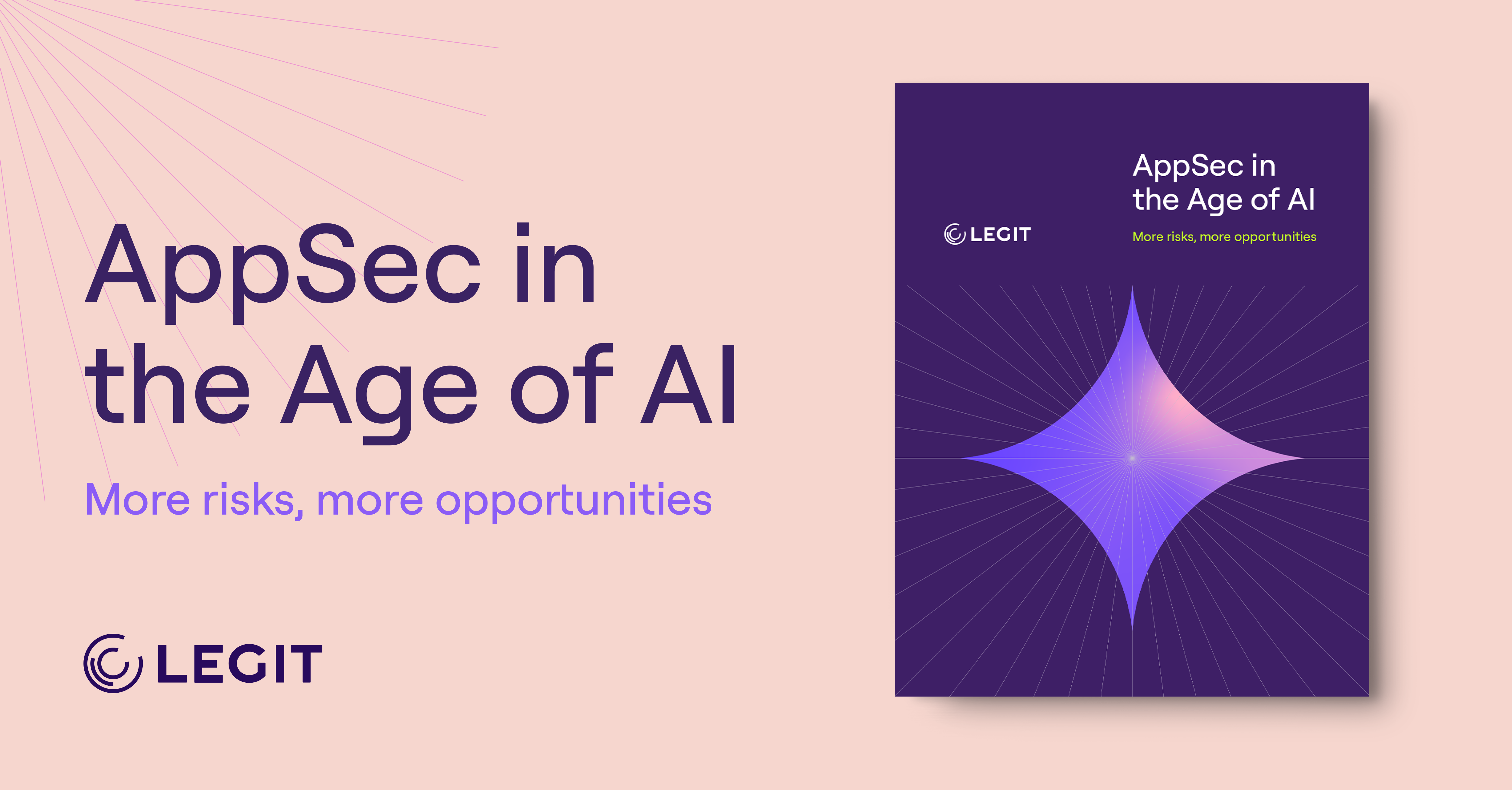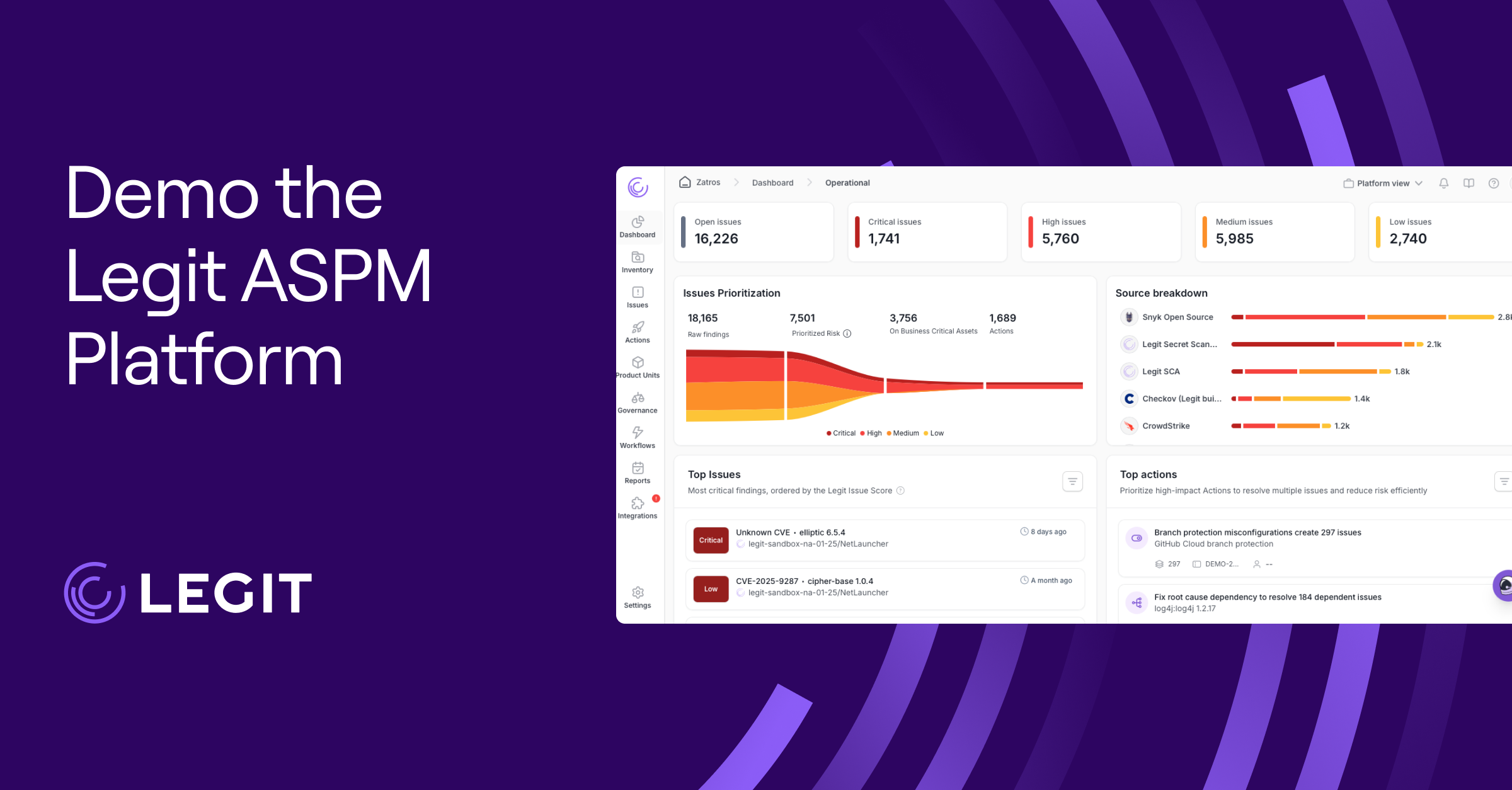AI DevSecOps reflects the fundamental shifts in software development stemming from the rise of AI technologies. Security teams are now using AI to automate code reviews, detect vulnerabilities earlier, and manage risks at scale beyond what traditional testing methods can manage.
These new applications mean development pipelines have become more complex, blending cloud-native apps, third-party code, and AI-generated components that can introduce new blind spots.
This article walks through the current risks in DevSecOps pipelines, ways AI is being applied to solve those gaps, and how to integrate AI to your DevSecOps process without introducing new attack paths. You’ll find practical examples and strategies for many risks throughout, so your team can innovate without sacrificing security.
Current Risks in DevSecOps Pipelines
Even with automation and AI on the rise, many DevSecOps pipelines still carry vulnerabilities that attackers can quickly exploit. Below are five of the most pressing risks in a modern DevSecOps environment:
- Supply chain attacks: Development relies on open-source packages and third-party code. A single compromised dependency can silently infect the entire application, which reinforces the need to automate security testing within DevSecOps pipelines to catch issues sooner.
- Misconfigurations and infrastructure vulnerabilities: In fast-moving continuous integration and continuous delivery (CI/CD) environments, insecure defaults or sloppy configurations can go unnoticed. Cloud resources, containers, and infrastructure as code (IaC) templates carry risk without properly set access controls or isolation boundaries. If they aren’t caught early, these misconfigurations can persist from development through deployment and create ongoing vulnerabilities.
- Insider threats and privilege misuse: With so many hands in the pipeline, it’s easy for someone—careless or malicious—to make unauthorized changes or access sensitive information. When roles aren’t clearly defined, even well-meaning users can push risky code or expose credentials.
- Skill gaps in security: AI-powered tooling is still a relatively new technology. As development shifts toward AI, many teams still lack the skill to handle risks like model manipulation, prompt injection, or exposure from insecure AI-generated code.
- Alert fatigue and lack of context: Siloed tools generate thousands of alerts—and most of them are irrelevant. Without unified visibility across the pipeline, real threats can get buried in the noise when it matters most.
What Are the Applications of AI in DevSecOps?
AI is changing how teams secure applications, moving security checks from reactive to proactive and building in previously bolted-on tools. Here’s where AI is making the biggest impact across modern pipelines.
Automates Security Testing at Scale
AI is increasingly being used to automate DevSecOps testing processes that once slowed development. Tools powered by machine learning (ML) can scan for vulnerabilities during coding and flag high-risk logic patterns without breaking the developer’s flow. This AI-powered security approach means fewer manual scans and more secure code pushed through, with less friction than traditional methods.
Adds Predictive Threat Intelligence
AI models trained on threat data can spot attack patterns before they become a bigger concern. These systems monitor real-time behavior across cloud services, APIs, and applications to surface risks based on potential exploitability, not just severity scores. As the role of AI in DevOps expands into DevSecOps, these tools can help a team shift from reacting to issues to anticipating them.
Detects Vulnerabilities in AI-Generated Code
As teams adopt tools like GitHub Copilot and other large language model (LLM)-based agents, they introduce code that may never be reviewed by humans. AI-based scanners can analyze LLM-generated code for vulnerabilities and evaluate the integrity of prompts or model outputs. The growing need for AI code detection and scanning makes these tools a must-have.
Bridges Skill Gaps Without Slowing Down Teams
Many teams don’t have a full bench of AppSec experts. AI tools can fill the gaps in human skill by providing contextual guidance and suggesting remediation directly in the integrated development environment. Those tools turn secure coding into a shared responsibility, so developers can make safer decisions without needing constant input from security teams. This application aligns with the broader shifts in the role of AI in cybersecurity, where distributed responsibilities make security part of the development process.
Enables Real-Time Monitoring and Response
ML models can monitor CI/CD pipelines and run applications in near real time, detecting anomalous behavior and triggering immediate alerts. That gives teams a faster way to stop threats before they embed themselves into the system and cause serious issues.
Useful Tools for AI DevSecOps
The tools you choose shape how effective your DevSecOps AI program really is. The right platform—like these useful tools—can help you ship secure software at speed:
- Legit Security’s end-to-end platform connects application security to the full software delivery pipeline. Its AI-native features help teams detect drift, insecure code changes, and patterns that increase exposure across dev environments. By continuously analyzing code, Legit enables context-aware decisions that go far beyond the static application security testing (SAST) used in most AI cybersecurity tools.
- Snyk uses AI-driven analysis to uncover vulnerabilities in proprietary code and open-source packages. Its integration directly into developer workflows helps it detect common vulnerabilities, subtle issues in logic, and risky coding practices.
- Checkmarx combines static and dynamic analysis with AI models trained to spot significant threats. It can prioritize critical vulnerabilities based on exploitability and usage context, and its code scanning supports shift-left practices by finding issues early in the software development lifecycle.
- Practical DevSecOps provides hands-on DevSecOps and AI security training and certifications in browser-based labs. Your team will practice securing AI infrastructure, containers, Kubernetes, APIs, and the software supply chain, gaining skills they can bring back into everyday development work.
4 Best Practices for AI in DevSecOps
AI can’t magically fix pipelines, but it can unlock serious efficiency and security gains when it’s applied with intention. Here are four practical ways to integrate AI into your DevSecOps workflows and measure its impact.
1. Assess Your Workflow
Before layering AI into your toolkit, determine where it’ll really make a difference. Look at the pain points in your pipeline, like long vulnerability resolution times, QA bottlenecks, or legacy code debt, to determine where AI can reduce friction without adding risk. AI-generated code isn’t immune to insecurities, so start small and adjust workflows to include automation and verification in the early stages of your process.
2. Set Clear Objectives From the Start
Don’t adopt AI just to keep up with industry trends. Set clear goals, like faster code reviews, fewer false positives, and stronger remediation cycles, before adding AI to your pipeline. It’s just as important that your teams know how successful AI implementation will be measured. DevSecOps myths may make AI sound like a quick fix, but your team and processes are less likely to benefit without training led by clear objectives. Knowing how to work with your tools early on will set you up for later success.
3. Establish Guardrails and Oversight
Generative AI can accelerate development, but it also introduces new risks, like exposing sensitive data or hallucinated code fixes. To avoid complexity and blind spots that weaken your security posture, consolidate your tooling scope and influence. Limit risk exposure by establishing security policies, vetting tools, and working with your legal and compliance teams early.
4. Measure Real Outcomes
Tracking AI based on activity like code suggestions or merge requests isn’t the same as measuring the tool’s real value. More code isn’t always better—AI-generated code can even introduce weak spots to your program. Instead, use metrics like vulnerability resolution time and review accuracy to evaluate how AI is changing performance. Dashboards that track AI-assisted workflows can help you get better visibility into what's working and what needs adjustments.
Use Legit’s AI-SPM to Enhance DevSecOps Workflows
Legit Security’s AI security posture management (AI-SPM) platform gives you visibility across your entire DevSecOps pipeline. It uses AI to connect the dots between tools and risk, so you can catch drift, flag unreviewed AI-generated code, and spot issues before they spread. With built-in guardrails and real-time context, AI-SPM helps teams move fast without losing control.
Book a demo to try Legit’s AI-SPM with your team.
Download our new whitepaper.


